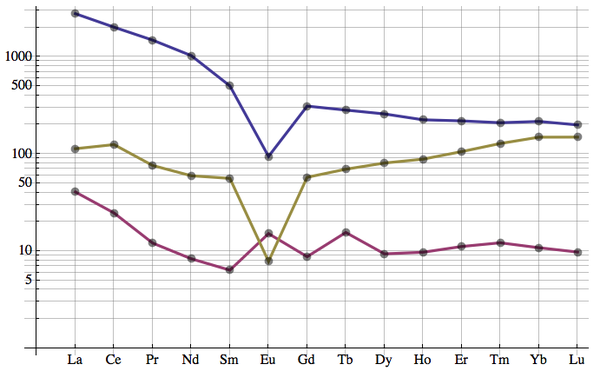I have some chemical data that I am plotting using ListLogPlot.
data={{2776.37,2016.64,1483.51,1027.35,500.878,94.1385,310.402,282.548,
257.886,224.359,218.688,209.312,215.776,198.78},
{40.5063,24.633,12.069,8.3151,6.35135,15.0977,8.74372,15.5125,9.34959,
9.70696,11.125,12.1457,10.8075,9.7561},
{113.08,124.633,75.9698,59.5186,55.9459,7.81528,57.4372,69.5291,80.4878,
88.2784,105.563,127.935,148.571,148.78}};
ListLogPlot[data, Joined -> True]

I want to replace the x-axis tick values with the associated elements.
e.g. replace 1,2,3,...,14 with
xaxis= {"La","Ce","Pr","Nd","Sm","Eu","Gd","Tb","Dy","Ho","Er","Tm","Yb","Lu"};
Any suggestions on how to achieve this? Is there another plot function that I should be using?

